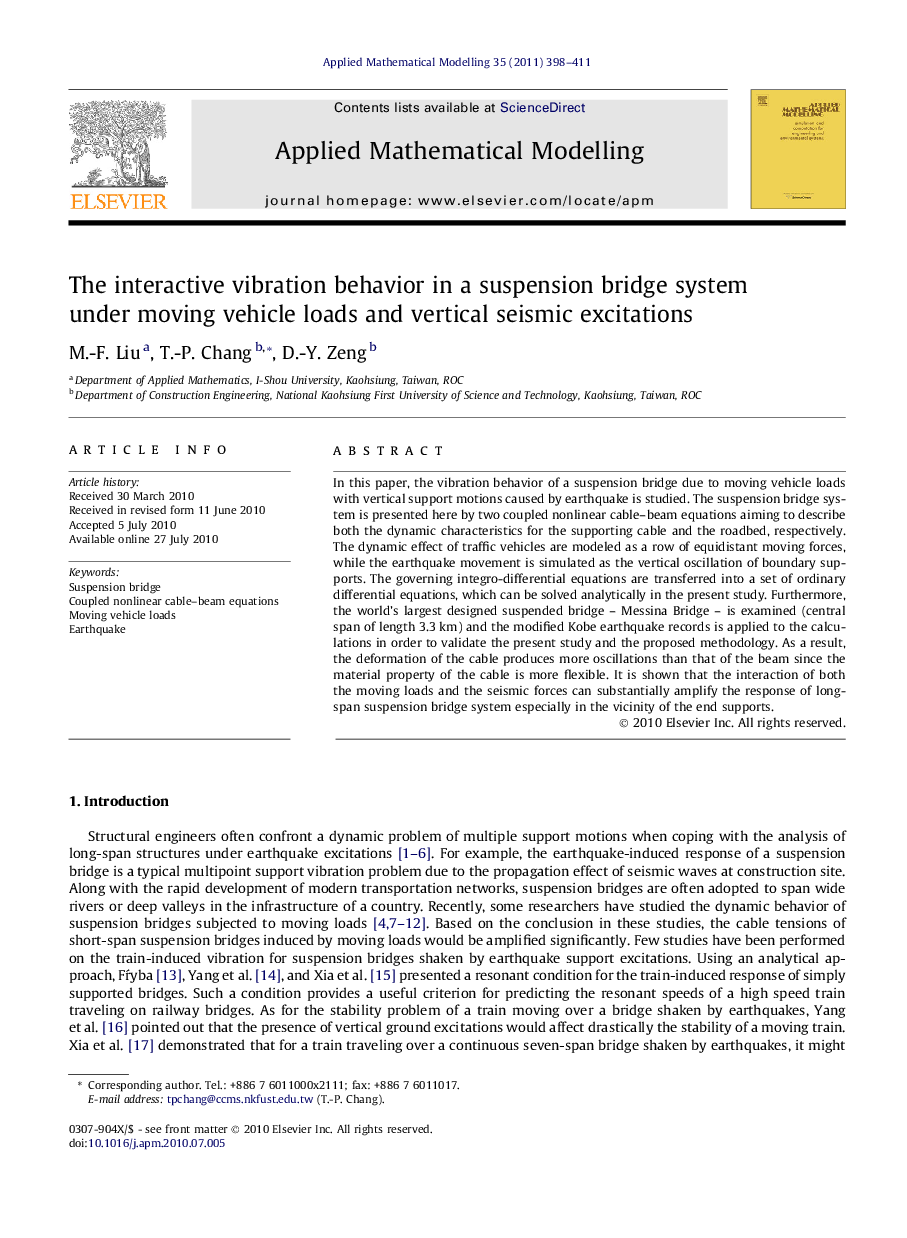| Article ID | Journal | Published Year | Pages | File Type |
|---|---|---|---|---|
| 1705399 | Applied Mathematical Modelling | 2011 | 14 Pages |
In this paper, the vibration behavior of a suspension bridge due to moving vehicle loads with vertical support motions caused by earthquake is studied. The suspension bridge system is presented here by two coupled nonlinear cable–beam equations aiming to describe both the dynamic characteristics for the supporting cable and the roadbed, respectively. The dynamic effect of traffic vehicles are modeled as a row of equidistant moving forces, while the earthquake movement is simulated as the vertical oscillation of boundary supports. The governing integro-differential equations are transferred into a set of ordinary differential equations, which can be solved analytically in the present study. Furthermore, the world’s largest designed suspended bridge – Messina Bridge – is examined (central span of length 3.3 km) and the modified Kobe earthquake records is applied to the calculations in order to validate the present study and the proposed methodology. As a result, the deformation of the cable produces more oscillations than that of the beam since the material property of the cable is more flexible. It is shown that the interaction of both the moving loads and the seismic forces can substantially amplify the response of long-span suspension bridge system especially in the vicinity of the end supports.
